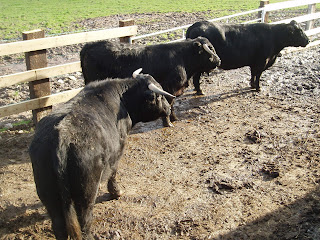The bush is useful shelter not just from cats but from other birds. In the big freeze before Christmas 2010 the bigger birds descended looking for food. Crows and jays took their pick of the best, while at one time there were 14 blackbirds (11 of them male – where were the females?) who bullied each other and anything smaller that came near. The small birds hid nervously in the berberis until these thugs had gone.
Then last week the bush showed its true worth. I was on the phone, watching the birds out of the window. Suddenly there was a flurry of blue landing on a branch – a pigeon I thought at first, though they rarely come in the garden: it was about pigeon sized. Then with astonishing agility the blueness flipped itself about the shrub, landing briefly here and there. It was so fast there were only flashes of slate blue and russet. The small birds were far too sensible to try to escape: they knew their best chance was to stay put amongst the tight berberis thorns. Sure enough, their pursuer landed briefly on the ground before taking off and vanishing, still hungry, to hunt elsewhere.
It was almost certainly a sparrowhawk, but I've previously only seen them shooting past at a zillion miles per hour. It was a great treat to see one so close. Meanwhile, my daughter was on the other end of the phone saying "What, what is it?", wondering why I'd let out a squawk and then stopped speaking.



